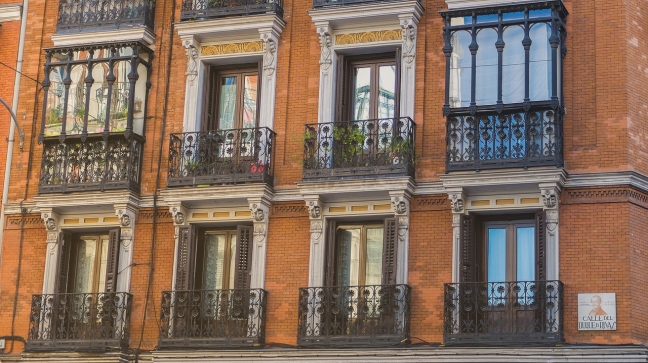Spain is located on the southwestern shore of Europe just north of Africa, and it is surrounded by the Atlantic Ocean on the western side and the Mediterranean on the southern side. France and the Pyrenees mountains are northeast of Spain, while Portugal takes up a portion of the western edge of the country.
 The Capital: Madrid
The Capital: Madrid
Main Cities: Madrid, Barcelona, Valencia & Seville
Population: 47.8 million (2016)
Size: 505,990 sq km (195,364 sq miles)
Major Religion: The majority of the population is Catholic, however different religious beliefs are also accepted such as Islam, Judaism, Protestantism and Hinduism.
Main Language: Spanish is the first language of over 72% of the population. Galician is spoken in the region of Galicia, and Basque is spoken by the population of Euskadi, the Spanish Basque Country. Catalan is spoken in Catalonia and the Balearic islands and Valencian is spoken in the Valencia region. All of these languages have official regional status.
Climate: Typically a Mediterranean climate characterised by hot, dry summers and mild, rainy winters.
Life Expectancy: 82 years
Dialling Code: +34
Emergency Numbers: 112 (police, ambulance, fire) 902 102 112 (report an incident) 011 (report a road traffic accident)
The Currency
Currency: Euro
Symbols: €
ISO 4217 Code: EUR
Central Bank: Banco de España (Bank of Spain)
Currency sub units: Cent – 1/100 of a Euro
Denominations: Notes: €5 €10 €20 €50 €100 €200 €500. Coins: 1c 2c 5c 10c 20c €1 €2

Local culture
Spain has one of the most distinctive cultures in the whole of Europe. It’s well known for its lively festivals and its popular drink, sangria. One of its best known cultural traditions is the siesta. Workers and students often go home around lunch time to spend a few hours resting or socialising before returning to their work or studies. The siesta originally started as a means of avoiding the strong midday heat and it’s remained a popular tradition in Spain. Larger cities such as Barcelona and Madrid have mainly moved on to a full working day, but “la siesta” still remains prominent in smaller towns around the country.
Clothing
Business dress is stylish, yet conservative. Dress as you would in the rest of Europe. Elegant accessories are important for both men and women.
The Spanish Language
Spanish has 329 million native speakers and ranks as the world’s number 2 in terms of how many people speak it as their first language (the first being Chinese at 1.2 billion native speakers).
Spanish is generally thought of as one of the easier languages to learn. It’s a phonetic language, meaning the way it’s written is generally the way it’s pronounced.
Spanish and English share much of their vocabulary as both languages have many words derived from Arabic and Latin.
Written Spanish
Spanish is written in Latin script and has an alphabet of 27 letters – ñ is the additional letter. K & W are letters in the alphabet however these are only used in loanwords taken from other languages, such as Karate, Kilo, and Water polo.
Capital letters in Spanish are few and far between. Generally, only people and place names are capitalised, as well as names of companies and government bodies. Names of nationalities or languages are not capitalised, nor are days of the week and months of the year.
Etiquette & customs
Physical contact during a conversation with a Spaniard is an accepted form of communicating in Spain and it’s not considered to be an invasion of personal space.
For lunch, Spanish people will normally not eat before 1.30pm; it’s more likely to be after 2pm and they will not usually start the evening meal until around 9pm. If eating out out at the weekend, it’s not unusual to begin dining at 10pm on even later.
Most shops outside of the major cities will close between 2pm and 5pm in line with the traditional siesta, as mentioned earlier.
Spanish office hours can be confusing to the uninitiated. Some offices stay open continuously from 9am to 3pm, with a very short lunch break. Others open in the morning, break up the day with a long lunch break of two to three hours, then reopen at 4pm or 5pm until 7pm or 8pm.
Religion
Catholic Christianity is the most popular religion in Spain with between 70-75% of Spaniards identifying with this religion. Islam is the second largest religion. Most Spaniards don’t participate regularly in religious worship.
The Spanish Church oversees one of the greatest repositories of religious architecture (and art) in the world, among them the outstanding cathedrals of Cordoba (a former mosque), Santiago de Compostela, Burgos, León, Seville and Toledo, monasteries like San Millán, Silos, Monstserrat, Poblet or Las Huelgas, or churches like Sagrada Familia in Barcelona by Antoni Gaudí.
Read original here.

